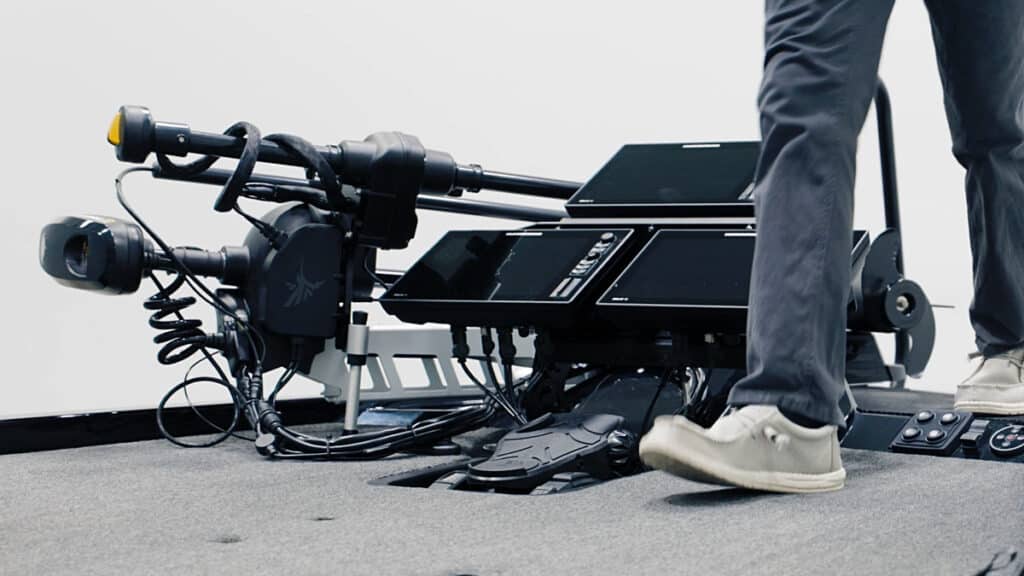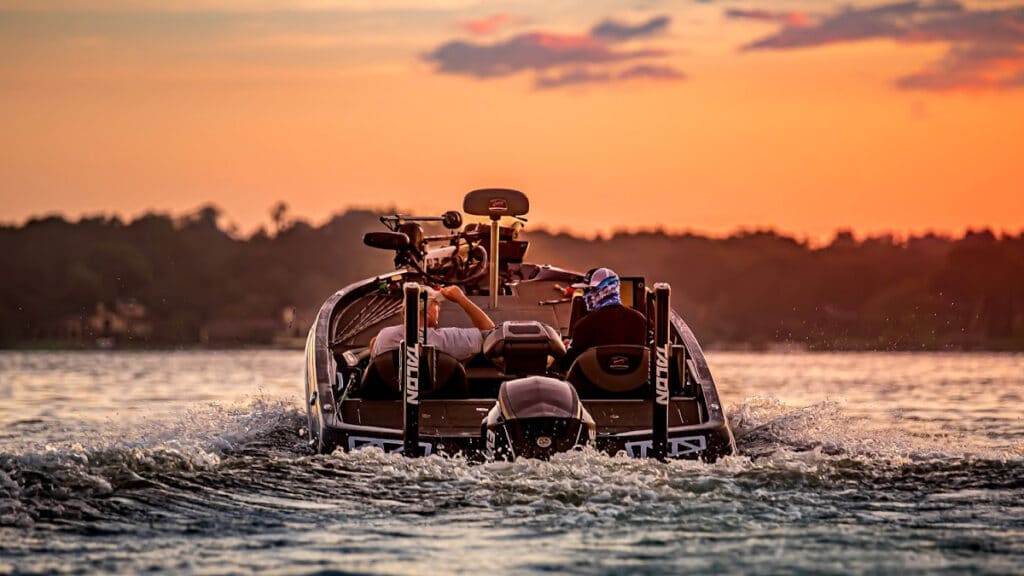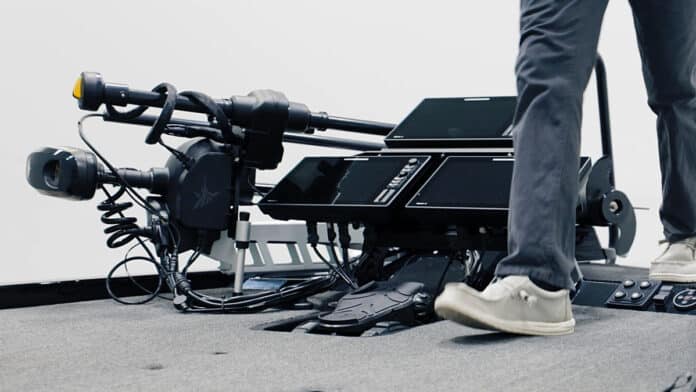In the ever-evolving world of bass fishing, the introduction of forward-facing sonar has sparked a heated debate among anglers. As new technologies emerge, how can anglers balance tradition with progress while considering ethical implications?
Let’s embark on a journey to uncover the absolute biggest controversy in bass fishing forward facing sonar. Explore the pros, cons, and potential future developments in this fascinating domain.
Short Summary
- Forward-facing sonar in bass fishing has been a debated topic, with anglers citing its advantages and drawbacks.
- It provides increased accuracy for locating fish, but can lead to an overreliance on technology and unequal access.
- Anglers must find the balance between embracing new technologies while preserving traditional techniques. To ensure fairness in competition and promote responsible use of forward-facing sonar.
Audio Transcript
The Great Debate: Pros and Cons of Forward Facing Sonar
The fishing world is divided over the use of forward-facing sonar. Some anglers, like professional angler Jason Christie, embrace this technology as a game-changer. While others like Randy Blaukat argue that it’s not the end all and end all for successful fishing. After all, not one angler can rely solely on technology to catch more fish.
So, what exactly are the advantages and disadvantages of using forward-facing sonar in bass fishing?
As the debate rages on, it’s important to acknowledge that forward-facing sonar has already significantly impacted the landscape of bass fishing. Anglers from all walks of life have found success using this technology. With many crediting it for helping them catch more fish than ever before.
Other sonar equipment, such as Humminbird MEGA 360, has changed shallow water fishing forever. However, concerns about overreliance on forward-facing sonar and its potential drawbacks cannot be ignored.
Benefits for Anglers

The main advantage of forward-facing sonar is its ability to provide anglers with increased accuracy and efficiency when detecting fish. This technology allows for a more detailed view of the underwater environment. Making it easier to locate fish and identify structure and cover.
For example, forward-facing sonar can reveal eelgrass flats or where fish are positioned on structure. This can offer bass a more advantageous option to disperse and not be so pressurized.
With this level of precision, anglers can quickly determine the most promising locations for casting their lures, increasing their chances of success. In essence, forward-facing sonar is all about maximizing effectiveness. Whiled minimizing wasted time and effort – a dream come true for many bass fishing enthusiasts.
Potential Drawbacks
On the other hand, some argue that the use of forward-facing sonar can lead to an overreliance on technology.
Instead of honing their skills and developing a deep understanding of the fishery. Anglers might become overly dependent on the equipment, losing sight of the bigger picture. This could cause a decline in overall proficiency and a reduced ability to interpret the water and comprehend fish behavior.
Moreover, there’s the issue of fairness in competition.
While some anglers may have access to state-of-the-art forward-facing sonar equipment, others may not be able to afford such technology. This disparity can create an uneven playing field, with those who can invest in the latest gear gaining an undue advantage over their less fortunate counterparts.
The Impact on Tournament Fishing

The introduction of forward-facing sonar has undoubtedly had a profound impact on tournament fishing.
Many participants argue that it levels the playing field, allowing anglers to compete on an even footing with those who have access to the latest technology. However, concerns about overutilization of technology and its potential negative effects on the sport and the fishery remain.
Ultimately, tournament fishing will need to strike a balance between incorporating emerging technologies and preserving traditional practices. As artificial intelligence, augmented reality, and other innovations become increasingly integrated into the sport. It’s crucial for the bass fishing community to find a way to embrace progress without sacrificing tradition.
Leveling the Playing Field
Forward-facing sonar has the potential to level the playing field in tournament fishing. By enabling all anglers to detect fish quickly and precisely, particularly in areas with shelter or structure. Regardless of their level of experience or access to cutting-edge technology, anglers who employ forward-facing sonar have the same opportunity to locate fish and capitalize on their findings.
This technology allows anglers to compete more fairly, as it eliminates some of the advantages that those with superior equipment might otherwise enjoy.
By providing all participants with the same benefit, forward-facing sonar helps to equalize the playing field. This ensure that tournament outcomes are determined by skill and strategy, rather than access to the latest technology.
Concerns about Overreliance
Despite the potential benefits of forward-facing sonar, some worry that it may lead to an overreliance on technology. As anglers become more dependent on the equipment, their understanding of the fishery and their overall skill level may decline.
This could result in a decreased ability to interpret the water and comprehend fish behavior. Furthermore, develop a reliance on technology instead of honing fishing skills.
In order to prevent this, it’s essential for anglers to use forward-facing sonar responsibly. Additionally, strike a balance between embracing technological advancements and maintaining a strong foundation in traditional fishing techniques.
By doing so, anglers ensure that they don’t become overly dependent on technology. Which could lead to lose sight of what makes the sport of bass fishing so rewarding.
Adapting to New Technologies
As with any rapidly evolving field, adapting to new technologies is crucial for anglers who want to remain competitive in bass fishing. While some may eagerly embrace new tools and techniques, others may find the transition more challenging.
Whether it’s a simple matter of learning to use forward-facing sonar effectively or a more complex issue of balancing tradition with progress, anglers must continually adapt and grow in order to stay ahead of the competition.
The key to success lies in being open to change and willing to learn from others who have already mastered the use of forward-facing sonar. By fostering a spirit of collaboration and a willingness to experiment, anglers can continue to evolve and thrive in this ever-changing landscape.
Embracing Change
Embracing change can be difficult, but it is necessary if anglers want to stay ahead of the competition. By adopting an open-minded attitude and being willing to learn from others, anglers can gain valuable insights into how to use new technologies effectively and get the most out of them.
This may involve attending seminars and workshops, seeking out advice from experienced anglers, or simply experimenting with new techniques and tools on the water.
By embracing change and being open to learning, anglers can harness the full potential of forward-facing sonar and other emerging technologies. In doing so, they can improve their fishing techniques, increase their success rates, and stay at the forefront of the sport.
Resisting the Shift
Resisting the shift to forward-facing sonar can lead to missed opportunities and a decrease in success. Some anglers may be hesitant to embrace new technologies due to a variety of factors, such as disruption of existing habits, fear of failure, or a perceived lack of value.
It’s important for anglers to recognize that these concerns are natural and can be overcome with patience, practice, and persistence. By acknowledging these fears and addressing them head-on, anglers can begin to see the benefits of forward-facing sonar and other new technologies.
As they gain experience and confidence, they’ll find that their skills and knowledge continue to grow, allowing them to take full advantage of these innovations and maintain their competitive edge.
Ethical Considerations
In addition to the practical considerations associated with forward-facing sonar, anglers must also take into account the ethical implications of using this technology.
As with any advancement in the sport, it’s crucial to weigh the potential benefits against the potential drawbacks, particularly in terms of the impact on fish populations and fairness in competition.
By considering these ethical concerns, anglers can ensure that they are using forward-facing sonar responsibly and in a manner that is respectful of both the environment and their fellow competitors.
This will help maintain the integrity of the sport and ensure that it continues to thrive for generations to come.
Impact on Fish Populations
The use of forward-facing sonar can have a negative impact on fish populations, as it can make it easier for anglers to target specific species or sizes of fish.
This could potentially lead to over-harvesting and a disruption of the natural balance within the fishery.
Additionally, the ability to observe fish behavior in real-time may also impact their natural instincts, causing them to become more cautious and less likely to engage with lures.
As responsible anglers, it’s crucial to consider the potential consequences of using forward-facing sonar and to take steps to minimize any negative impacts on fish populations.
This might involve changing limits on the number of fish that can be caught. Or implementing catch-and-release policies to help preserve the fishery for future generations.
Fairness in Competition
When it comes to fairness in competition, concerns arise regarding the potential advantage that some anglers may gain through the use of forward-facing sonar. As mentioned earlier, not all anglers have equal access to this technology.
Which can create an uneven playing field and potentially give an unfair advantage to those who can afford the latest equipment.
To address this issue, tournament organizers and the bass fishing community as a whole must work together to establish guidelines and rules that ensure a fair and level playing field for all participants.
This may involve placing restrictions on the use of certain technologies. Or providing equal access to resources in order to maintain a sense of fairness and sportsmanship within the sport.
Tips for Integrating Forward-Facing Sonar into Your Fishing Arsenal
For anglers who are ready to embrace forward-facing sonar and integrate it into their fishing arsenal, there are several tips and strategies that can help ensure a smooth transition.
From selecting the right equipment to learning from the pros, understanding how to use the technology effectively is key to reaping the full benefits it has to offer.
By taking the time to familiarize themselves with the various aspects of forward-facing sonar, anglers can maximize their success on the water and stay ahead of the competition.
In doing so, they’ll not only improve their fishing skills, but also gain a deeper understanding of the underwater world and the fascinating creatures that inhabit it.
Selecting the Right Equipment
Selecting the right equipment is key, as there are many different types of forward-facing sonar available on the market. When choosing a forward-facing sonar system, important factors to consider include frequency, power, and cone angle, as these will influence the level of detail and precision of the sonar readings.
The three options are Humminbird MEGA Live,
Additionally, the size and type of transducer, as well as compatibility with your boat and other electronics, should be taken into account.
By carefully considering these factors and conducting thorough research, anglers can ensure that they are investing in a forward-facing sonar system that best meets their needs and preferences.
With the right equipment in hand, they can confidently head out on the water and put their newfound skills to the test.
Learning from the Pros
Learning from professional anglers who have already mastered the use of forward-facing sonar can provide invaluable insights and guidance. By observing their techniques and strategies, anglers can gain a better understanding of how to effectively employ this technology in their own fishing endeavors.
In addition to seeking advice from the pros, it’s also important for anglers to practice and experiment with forward-facing sonar on their own.
By spending time on the water and adjusting their techniques as needed, they can develop a strong foundation in the use of this technology and become more confident in their ability to locate and catch fish using forward-facing sonar.
The Future of Bass Fishing and Forward-Facing Sonar
The future of bass fishing and forward-facing sonar is uncertain. There are some innovations on the horizon that could revolutionize the way anglers approach the sport.
From artificial intelligence and machine learning to advancements in transducer placement. However, the potential for growth and improvement in this field is vast.
As the sport of bass fishing continues to evolve, it’s crucial for anglers to stay informed and adapt to new technologies and techniques. By embracing progress and maintaining a strong connection to tradition, they can ensure that they remain competitive and enjoy the many rewards that this exciting sport has to offer.
Innovations on the Horizon
Innovations such as artificial intelligence and machine learning could revolutionize the way anglers approach fishing. Allowing them to gain an even greater advantage over their competitors.
These advancements could potentially lead to more accurate and efficient sonar systems. As well as new methods for analyzing and interpreting the vast amounts of data that forward-facing sonar generates.
As these innovations continue to develop, it’s important for anglers to remain open to change and be willing to adopt new technologies as they become available.
By staying at the forefront of progress, they can ensure that they are utilizing the most effective tools and techniques in their pursuit of bass fishing success.
Balancing Tradition and Progress
Balancing tradition and progress will be key, as anglers must find a way to embrace new technologies without sacrificing their knowledge of the fishery and their overall skill level.

This may involve a willingness to learn and adjust to new methods while still acknowledging the importance of preserving traditional fishing techniques.
By striking this delicate balance, anglers can ensure that they are staying competitive. Furthermore, adapting to the ever-changing landscape of bass fishing. While still maintaining a strong connection to the sport’s rich history and heritage.
In doing so, they can continue to enjoy the many rewards and challenges that bass fishing has to offer for years to come.
Summary
In conclusion, forward-facing sonar has undeniably changed the game in bass fishing. While it offers numerous benefits, such as increased accuracy and efficiency in locating fish. There are also potential drawbacks and ethical concerns to consider. As the sport continues to evolve, anglers must strike a balance between embracing new technologies. Additionally, maintain a strong connection to tradition. By doing so, anglers can ensure that they stay competitive. Also, preserve the integrity of the sport, and enjoy the many rewards and challenges that bass fishing has to offer.
Frequently Asked Questions
Yes, forward facing sonar can work in shallow water. However, the angler needs to bear in mind that the shallower the water, the less advantage it offers.
Although it is still useful for anglers looking to target fish in shallow cover, it does not have the same effectiveness as it does when used offshore.
Forward facing sonar technology provides anglers with a unique look beneath the surface of the water. Showing a real-time 3D view of the terrain and environment below.
This powerful tool gives anglers the ability to see fish from any direction as they navigate lakes and rivers. As such, it has become an invaluable resource for successful fishing.
Yes, Lowrance does have forward facing sonar technology. They have introduced their version of forward sonar, alongside Garmin and Humminbird.
Bass fishing is an incredibly popular sport for anglers in the United States. The appeal lies in its accessibility; bass are easy to find and catch with standard fishing equipment and lures. In addition, there are plenty of opportunities to showcase your skills at bass tournaments. Making the tournament a great way to have fun and show off your talent.
With its combination of challenge and reward, bass fishing is a great hobby for those looking for an exciting outdoor experience.









I think people who talk ish about livescope just suck at fishing all this blah blah blah its cheating no bruh you just dont know how to fish
suckers talking trash about forward facing sonar its because they suck at fishing